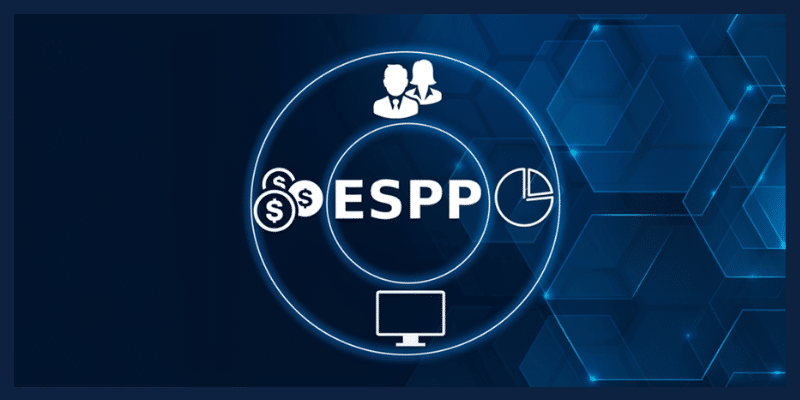
If you’re wondering whether you should enroll in your company’s ESPP, consider it as one way to help you build wealth. This article will help you minimize taxes, including the gain from selling your ESPP shares, so you can decide if this strategy is right for you.
Key Takeaways
An ESPP is an employee benefit available at many companies that have issued publicly traded stock. If a company offers an employee discount, employees pay tax at ordinary income tax rates on the discount amount when shares are purchased, and capital gain upon the sale of the shares. The amount of the employee discount, or the difference between the price paid and the fair market value on the date of purchase, will be included on your W-2 if you’re a company employee. When you sell the shares, the capital gain may be taxed at the lower long-term capital gain rate, depending upon how long you held the shares. A common mistake made after selling ESPP shares occurs when the sale is reported on your tax return: be sure to include the employee discount amount shown on your W-2 to your cost basis when calculating your capital gain.
How Does an ESPP Work?
If your employer offers an ESPP, you can generally purchase company stock at a discount from the stock’s fair market value. Usually, the discount allows you to buy the stock at 85% of the value. In addition, you’ll benefit from a rising stock price if your plan allows you to buy the shares at the 15% discount at the lower of the beginning or end of the ESPP offering period.
How Are ESPP Shares Taxed?
The basic tax consequence of an ESPP transaction is that you’ll have ordinary income when you purchase shares and capital gain on the sale of the shares. The amount of the discount, or the difference between the price you paid and the fair market value, will be included in your W-2. When you sell the shares, the gain may be taxed at the lower long-term rate, depending upon how long you held the shares.
Determining whether you are eligible for long-term capital gain treatment on ESPP sales depends on several factors. The holding period determines whether a capital gain (or loss) will be treated as short- or long-term. Long-term gain treatment exists if you hold the shares for at least one year and one day beyond the last day in the purchase period. The other factor that determines if you’ll get favorable capital gain treatment is whether the sale transaction is a qualifying disposition or a non-qualifying disposition. Whether or not the sale is qualifying depends upon the plan’s offering period and how long you held the shares before selling them. The capital gain will be long-term if it’s a qualifying disposition, or short-term if it’s a disqualifying disposition.
A disposition is considered qualifying when you dispose of stock held more than one year from the date of purchase of ESPP shares and two years from the date of the beginning of the applicable ESPP offering period. For a qualifying disposition of stock, capital gain (or loss) will be long-term.
A disqualifying disposition of ESPP shares happens when you dispose of stock that you’ve held either less than two years from the beginning of the ESPP offering period, or less than one year from the date of purchase. If you have a disqualifying disposition of stock, your capital gain is considered short-term and taxed at your ordinary income tax rate.
How Can You Avoid the ESPP Tax Trap?
A common mistake many people make when they sell ESPP shares and need to figure out their cost basis is forgetting to add the amount that was included in their W-2 to the amount they paid for the stock. The amount included in your W-2 is considered part of cost basis. When you add the amount included in your W-2 to your cost basis, your capital gain and corresponding tax liability are reduced.
Understanding Your ESPP Plan: Key Definitions
Here are some definitions and descriptions to help you understand and analyze your ESPP plan:
- The enrollment date is the first day of the offering period (also called the subscription period) for which you can make stock purchases.
- The exercise date is the last day of the purchase period.
- In many ESPP plans, your purchase price is based on the lower of the stock’s price at the beginning or the end of the offering period. If the price rises throughout the period, your purchase price is based on the beginning of the period price. For example, at the beginning of the subscription period, the shares traded at $90. At the end of the period, the shares traded at $99. The price you’ll pay for the shares is $90.
- The purchase period is a window of time and depends on your company’s plan. Many companies have a six-month period during which after-tax dollars are deducted from an employee’s paycheck to purchase company stock.
- The plan document is a legal document defining how the ESPP plan works. It’s a good idea to get a copy of your employer’s ESPP plan document for reference.
- You are deemed to have earned income for the amount of any purchase discount. Many companies give a 15% discount on the purchase of shares; your W-2 should reflect this discount.
- When preparing your tax return, include in cost basis the amount of any discount. In the above example, for instance, you’re able to purchase company’s shares currently trading at $99 for $90. The $13.50 discount (15% of $90) is income to you, and you will be subject to tax on this amount. Your company should include the discount value in your W-2 and accordingly, you’ll pay tax on it when you file your tax return. The amount of the discount will be taxed to you at ordinary income tax rates.
Planning with ESPP Shares
We generally recommend participating the ESPP plan and immediately selling the shares when you receive them. (If you have a 10b5-1 plan available, include the ESPP shares in it.) Although any gain will be taxed at the higher short-term rates, you’ll realize the 15% discount regardless of what the stock price does down the line. Plus, if the share price drops in the future and you continue to participate in the ESPP plan, you’ll buy more stock at lower prices.
Making the Most of Your ESPP
Enrolling in the ESPP plan is a good move for most people—it’s as if you got a 15% bonus, plus an additional bonus on a rising stock price if your plan allows for this. Just be sure to sell the shares as soon as possible, and include the total price you paid, including the share price and the discount included on your W-2, to keep your capital gain tax low.
At Mission Wealth, we help clients take advantage of benefits like ESPPs while minimizing taxes, maximizing diversification, and being mindful of long-term goals. Contact us today to explore how your company’s stock plan can enhance your overall wealth strategy.
Financial Services for Tech Professionals
Work closely with an experienced financial advisor who understands your needs and benefits and can provide tailored advice and support.Partner with Experts Who Understand Your Needs
At Mission Wealth, we have years of experience guiding tech professionals like Google, Apple, and Microsoft employees through the complexities of their financial journeys. From navigating equity compensation plans to maximizing your unique benefits and managing significant stock holdings, our team specializes in tailored strategies designed to help you thrive. Let us provide the expert guidance you need to achieve financial clarity and confidence.
To meet with a Mission Wealth financial advisor, contact us today at (805) 882-2360 or online.
Let's Keep in Touch!
Subscribe for exclusive content and timely tips to empower you on your financial journey. Our communications go straight into your inbox, so you'll never miss out on expert advice that can positively impact your life.Recent Tech Insight Articles

Should You Enroll in the Employee Stock Purchase Plan (ESPP)?
September 30, 2025
Is a Donor-Advised Fund Right for You?
May 13, 2025


